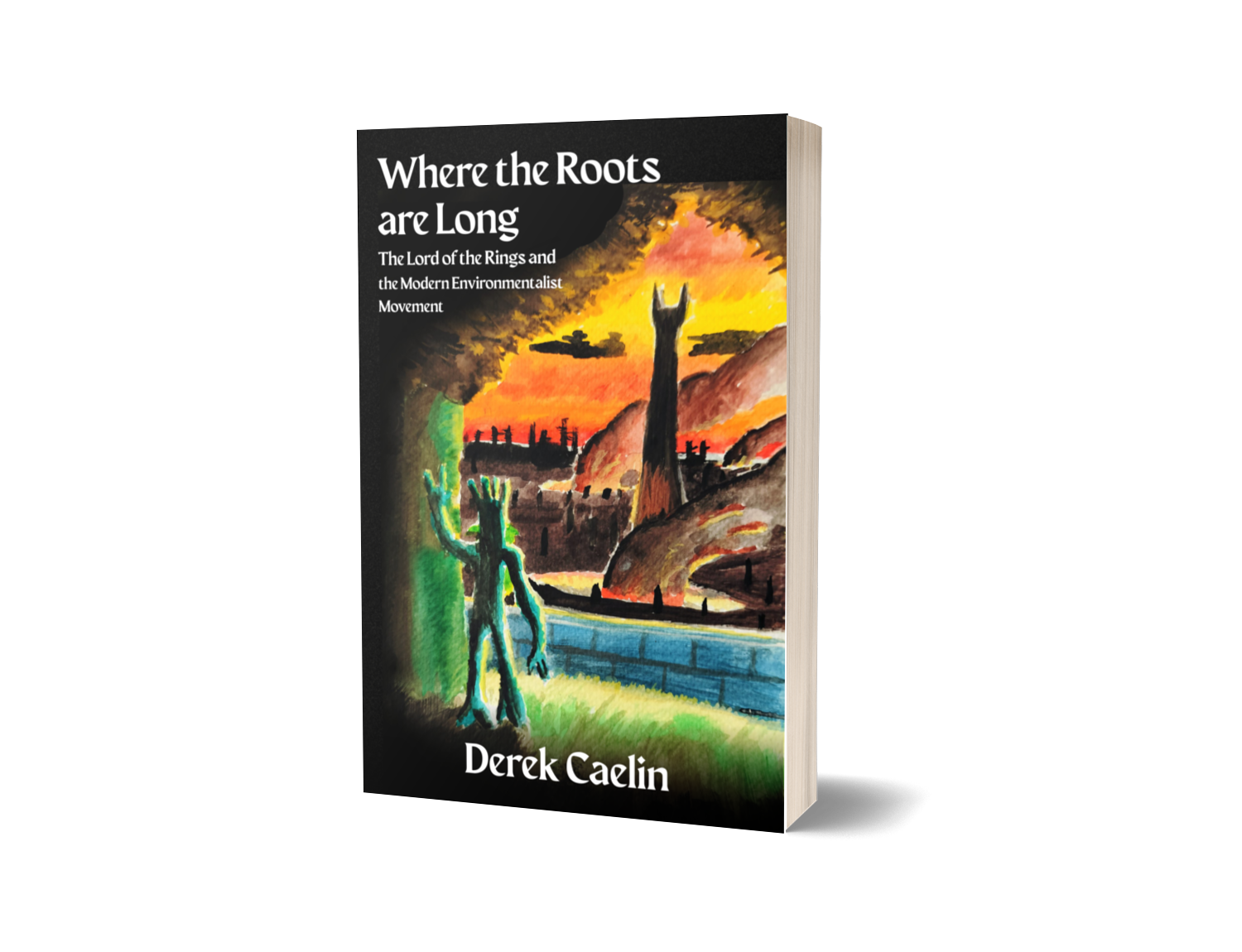An upcoming book linking Tolkien’s saga with today’s environmental crisis
The forests burn. Heroic leaders and every day people struggle against environmental degredation. Activists keep hope alive when all signs point to an inevitable defeat. These themes are found in The Lord of the Rings, one of the most important books of the 20th century, and the modern environmentalist movement. Where the Roots are Long: The Lord of the Rings and the Modern Environmentalist Movement is an upcoming book by Derek Caelin that explores the epic fantasy novel and shows how it can inform, console, and inspire people fighting for a better, abundant, sustainable world today.
What is the status of the book?
The first draft is written. The book stands at about 45,000 words and I expect another 5,000 or so as I revisit my outline. My goal is to weave together real world events, personal experience, and events and themes from the Lord of the Rings to build a cohesive whole.
Excerpts
Topics
Ideal Nature in Tolkien
- The roots of Tolkien’s love of trees.
- The beauty of Middle Eath and its connection to our own world
- The personhood of nature: how forests, mountains, and rivers are treated as people, from New Zealand to Ecuador, from the Mountain of Caradhras to the Ents and the Old Forest.
- The attitudes of characters towards nature, and how natural elements integrate with culture. From the Hobbits in the Shire, to the Elves and their forests, to the Kings of Gondor and their symbolic reverance for the white tree.
Environmental Action
How might modern environmentalists world take inspiration from characters and cultures from The Lord of the Rings?
- Living in harmony with nature: the Hobbits and Elves incorporate the natural world into their dellings. How do Middle-earth cultures compare with our own earthen dwellings and living structures.
- Sustainable management: The Entwives and agriculture. Tom Bombadil and light-touch management. Gimli and Conservation in the Glittering Caves of Aglerond. The Elves and their dream of preserving all things unstained meets the modern regenerative agriculture and ranching movement.
- Defending nature and restoring it: Sauron and Saruman, and the threat posed by industrialization and overconsumption. The Ents rising up to destroy Isengard, and the debate role of violence against property.
Hope, Despair, and Action
The heart of this book. The Lord of the Rings is filled with characters who confront despair and either succumb to it or rise above it. Topics include:
- The coming darkness: a comparison of the crisis in Middle-earth and our risk in the face of a changing climate.
- Despair as a weapon: The Nazgul, the Palantir, and the Words of Wormtongue. How does despair take root in modern changemakers?
- Responses to despair: denial, subersion, abdengation, and action. I draw parallels between characters in the book and trends in the modern dialog on climate change. From “brightsiders” like Saruman who assume things will be better under the dark lord, to people who refuse to take action, like Denethor, to the people who press on to take action despite a sense of hopelessness, like Frodo and Sam.
Much of this book looks at the challenge of taking action when one personally feels despair, and what we might learn from The Lord of the Rings characters who wrestle with this dilemma.
